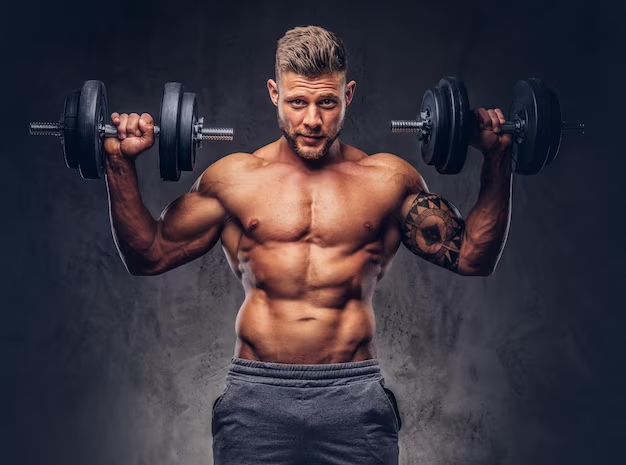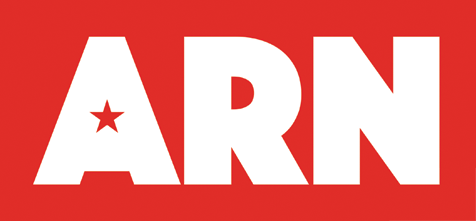
10 Types of Bodybuilding Poses With Correct Form
Bodybuilding is not just about lifting weights; it's an intricate combination of strength, symmetry, and presentation. One aspect that often takes center stage in competitions is the art of posing. Perfecting bodybuilding poses is crucial for showcasing your hard-earned physique in the most flattering light. In this guide, we'll explore 10 essential bodybuilding poses and delve into the correct form for each.
What is Meant by Poses in Bodybuilding?
In bodybuilding, the pose shows the specific stances or positions athletes adopt to showcase their physique's muscular development, definition, and symmetry during competitions. This pose also highlights various muscle groups, emphasizing size, shape, and conditioning. Bodybuilders meticulously practice these bodybuilding poses to present their bodies in the most favorable light, emphasizing strengths and minimizing weaknesses. The art of posing is integral to the sport, as judges evaluate muscle mass with presentation and aesthetics. Perfecting poses requires a combination of muscularity, flexibility, and stage presence, contributing significantly to a competitor's overall performance and success in the competitive realm of bodybuilding.
Learn Top 8+ Bodybuilding Poses For Best Results
Is bodybuilding a sport, or is it a manifestation of performance art? Physique competitors dedicate months of rigorous training to cultivate a distinct quality that they subsequently showcase to the world—a process not unlike many sports.
However, unlike traditional sports where triumph is often marked by defeating an opponent, scoring a home run, or breaking a world record, a bodybuilder's moment of glory arises from showcasing the most impressive physique beneath the stark lights of the bodybuilding stage. How does the bodybuilder persuade both a panel of judges and the audience that their physique stands out the most on competition day? While size and proportion are undoubtedly crucial, a captivating posing routine plays a pivotal role in securing victory. These essential poses form the core of open bodybuilding, supplemented by a few mandatory poses reserved for unique situations.
1) Front Double Biceps Pose

Form: Stand tall with your feet shoulder-width apart. Flex your biceps, chest, and abs while keeping your quads tight. Ensure your elbows are at shoulder height.
In this pose, the bodybuilder positions themselves with legs shoulder-width apart and raises their arms to showcase the flexed biceps. This allows judges to evaluate the entire front musculature, assessing from the top to the bottom. It serves as an excellent pose for evaluating the X-frame, characterized by broad shoulders and sweeping quads, creating a visible "X" shape. Posers must maintain high elbows and extend their lats outward and forward. A well-executed front double biceps pose will also highlight the competitor's arms, abs, and thighs. While this pose doesn't leave much room for personal expression, some competitors may choose to turn their wrists to alter the flex of their biceps, but beyond that, variations are limited.
2) Front Lat Spread
Form: Again, stand with feet shoulder-width apart. Spread your lats wide, making your waist appear smaller. Keep your abs tight and flare your lats while pushing your chest forward.
The front lat spread pose emphasizes the breadth of the back, shoulder width, and the overall taper of the torso. To execute this pose, the competitor begins with feet positioned shoulder-width apart, toes turned outward at an angle, and contracts their thighs. They place their hands on their hips, palms facing downward, and flare out their lats. A well-executed front lat spread should also exhibit relaxed abdominal muscles. This enables the bodybuilder to lean back slightly while expanding their back, creating the optical illusion of a broader shoulder girdle and a narrower waist.
3) Side Chest Pose

Form: Turn your body to the side with one foot in front of the other. Flex the chest to the side facing the audience while keeping your abs and legs tight. Ensure your arms and shoulders are sculpted.
This pose showcases the physique from a lateral perspective, emphasizing the need for well-developed hamstrings and quadriceps when viewed from the side. Judges assess the completeness of chest development and the thickness of the arms in this position. Bodybuilders typically initiate the pose on the right side by planting their right foot, slightly bending both knees and bringing the legs together, engaging the hamstrings and quads. Simultaneously, they raise the audience-facing foot to flex the calves. Despite facing perpendicular to the audience, the side chest pose effectively conveys a substantial amount of muscularity. It stands out as one of the few poses that simultaneously highlights both quadriceps and hamstring development.
4) Side Triceps Pose
Form: Similar to the side chest pose, but this time focus on showcasing your triceps. Keep one arm down and flex the triceps, creating a streamlined profile.
Similar to the side chest pose, this stance highlights the triceps muscles and the seamless connection between the chest and shoulders. In contrast to the side chest pose, competitors do not obstruct their waists with their arms in this pose, necessitating the maintenance of flexed and controlled abdominal muscles. The leg positioning mirrors that of the side chest pose, requiring the competitor to keep their legs close together and engage almost every muscle in their body. Skillful posers leverage their "off" leg to push out their visible hamstring while simultaneously pulling their arm against their torso, accentuating the prominence of their triceps.
5) Back Double Biceps Pose
Form: Face away from the audience, and again, stand with feet shoulder-width apart. Flex your glutes, hamstrings, and back muscles. Bring your elbows up to shoulder height to emphasize your rear muscles.
A long-standing axiom in bodybuilding asserts that victories are clinched from the back. Comprising numerous muscles, this pose is designed to showcase the competitor's back size and symmetry in conjunction with their arms, shoulders, hamstrings, and calves. Executing the back pose bodybuilding involves flexing the biceps with arms extended to the sides, revealing the entirety of the back's musculature. It's crucial for the competitor not to pinch their shoulder blades together but to keep them open, allowing the lats to flare out expansively.
To enhance the V-taper, the competitor should slightly lean their torso back toward the judges, ensuring that the elbows remain slightly higher than the shoulders. Additionally, placing one foot backward on the ball of the foot contracts the calf. The contraction of hamstrings and glutes is essential to showcase separation and definition within these muscle groups.
Read More: How to take a pre-workout supplement?
6) Back Lat Spread
Form: Similar to the front lat spread, but this time showcase the width of your back. Lift your chest, tighten your glutes, and spread your lats wide.
This pose mirrors the front lat spread in functionality, with one noticeable distinction. In the rear lat spread, the competitor executes the front lat spread, but with their back turned towards the judges. During this pose, judges focus primarily on evaluating back width and thickness, in addition to the overall shape and taper of the competitor's torso silhouette. Competitors utilize this pose to showcase the development of their triceps, hamstrings, and calves from the rear perspective. A well-executed rear lat spread also involves the competitor leaning back, tilting their shoulders toward the audience. This action creates the illusion of a narrower waist and accentuates the coveted "Christmas tree" shape in the lower back.
7) Side Pose (Classic or Vacuum Pose)

Form: Stand sideways with one foot in front of the other. Create a classic pose, emphasizing a small waist by contracting your abs and pulling your stomach in. This pose is also known as the vacuum pose for creating a hollow abdominal appearance.
Exclusive to the Classic Physique division, the iconic stomach vacuum pose is a variation of the abdominal and thigh pose. In this pose, athletes expel all air from their diaphragm and contract their abdominal wall, creating the illusion of a "hollow" stomach—a torso seemingly emptied through vacuuming. The stomach vacuum not only highlights muscles such as the lats, serratus, and hip flexors but also showcases a remarkable level of bodily control rarely seen in other divisions of the sport.
This pose hearkens back to the revered "Golden Era" of bodybuilding when competitors prioritized their shoulder-to-waist ratio, and the stomach vacuum was a customary feature on stage, even during relaxed postures. Stomach vacuums serve as a distinctive element that sets Classic competitors apart from Open bodybuilders.
Also, there is a bodybuilder moon pose. The moon pose provides athletes with a distinctive means to showcase both their flexibility and the muscularity of their hamstrings.
8) Abs and Thigh Pose
Form: Stand tall, flex your quads, and tighten your abs. Place one leg in front to emphasize muscle definition. Keep your core tight and angle your body to showcase the abdominal and thigh muscles.
Although named the abdominal and thigh pose, this stance also accentuates lat width and the contestant's V-taper. Executing this bodybuilding pose involves the bodybuilder adopting a staggered stance, simultaneously flexing their legs and calves. They then raise their arms overhead, clasping their hands behind their head, exhaling sharply, and contracting their abs with maximum intensity. The abdominal and thigh pose showcases a chiseled core, highlighting the most impressive aspects of a well-developed set of legs.
In the Classic Physique division, some competitors may choose to initiate the abdominal and thigh pose by performing a stomach vacuum, demonstrating their exceptional control over their midsection.
9) Most Muscular Pose
Form: This is an intense pose where you flex every muscle group. Stand with feet shoulder-width apart, flex your quads, tighten your abs, and bring your arms up to flex your chest, shoulders, and biceps.
The most muscular pose lives up to its name, providing the bodybuilder with a single opportunity to showcase their entire musculature in full flex. While not universally acknowledged in every bodybuilding federation, most competitions grant contestants the opportunity to execute their preferred variation of the most muscular pose after judging rounds. Some bodybuilders choose to lean forward, flexing their arms with fists facing the audience, while others prefer a more upright stance, clasping their hands together in front of their waists. Although both approaches achieve the same outcome, they present distinct silhouettes, allowing each athlete to highlight the strengths of their physique.
Tips for Mastering Bodybuilding Poses
-
Practice Regularly: Posing is an art that requires practice. Spend dedicated time each day rehearsing your poses to enhance muscle memory and perfect your form.
-
Seek Feedback: Engage with experienced bodybuilders or coaches to get constructive feedback on your poses. They can offer valuable insights on how to improve your presentation.
-
Record Yourself: Use video recording to analyze your poses. This visual feedback allows you to identify improvement areas and track your progress over time.
-
Focus on Transitions: Smooth transitions between poses are crucial. Practice moving seamlessly from one pose to another to create a polished and confident presentation.
-
Study Posing Styles: Watch videos of successful bodybuilders to understand different posing styles. Take inspiration from seasoned competitors to develop your unique presentation style.
Avail the Top Supplements to Build Your Favorite Bodybuilding Poses?
Yes!! Experience the next level of fitness with Arms Race Nutrition. Our supplements are crafted to optimize your performance, helping you conquer every workout and achieve peak results! From energy-boosting formulas to muscle-repair essentials, we're your partner in the pursuit of excellence. Elevate your game, elevate your gains!

